What? |
|---|
|
Hagi (萩) is a small coastal town with a huge history. Better known to historians as Choshu (長州藩), the clan coming from Hagi was greatly influential during the transition of Japan into the modern and industrial age, better known as the Meiji Restoration. While mainly focusing on crafts like pottery and glassmaking nowadays, the town still prides itself with remnants of its great past. The castle isn’t standing anymore, but there are still the ruins and a preserved townscape. Some temples are famous because half of the Choshu clan is buried there. And there are some silent witnesses of the move to industrialism in the form of a reverberatory furnace and the remains of a shipyard. Just like next door Nagato, Hagi is blessed with a beautiful and rugged coastline of which the Susa Hornfels is probably the best known spot. |
Where? |
|
Located on the Sea of Japan side of Yamaguchi Prefecture (山口県), Hagi is not an easy place to get to. As I was staying in next door Nagato I took one of the very infrequent trains on the Sanin Main Line (山陰本線) trains to both Higashi-Hagi Station (東萩駅) and Susa Station (須佐駅). Easier might be to take the bus between Shin-Yamaguchi Station (新山口駅) and Hagi, but when I checked last time the timetable had changed due to the corona virus. A very long but most probably beautiful train ride from Masuda Station (益田駅) is another alternative. 
|
URL |
|
Japan Guide Outline Hagi Sightseeing Guide |
I combined my visit to Hagi with my stay in nextdoor Nagato. After taking the cruise “around” Omijima Island, I hopped on the train that took me to the ancient influential town. The train follows the coastline and is super relaxing equivalent the cruise that I only did a few hours ago.
Hagi promotes itself as a castle town despite the fact that there is no castle left. It’s the actual town they are proud of, and of course of their history as the home of one of the most prominent clans during the Meiji Restauration.
It’s hard to imagine such a small and remote coastal town as one of places where history was decided, but the same goes for Kagoshima of course.
And I understand this proudness about the past, I really do. But the fact is that the so-called well preserved castle town is only two blocks big and really hasn’t got anything to offer. The castle ruins are just that – ruins, and though mildly interesting, unfortunately not half as impressive as other ones like the Takeda Castle Ruins or the Takatori ones. Maybe the temple where half the Choshu clan was buried was more interesting, but as I didn’t go I wouldn’t know.
I chose to visit some industrial tourism sites instead: the reverberatory furnace - which was a pitiful pile of bricks and the Ebisugahana shipyard - which was equally pitiful but with the added onslaught of the in Japan omnipresent tetrapods.
I have to be honest and say that it’s been a long time since I was so disappointed in a destination. If you wish to visit a quaint castle town, why not go to Inuyama where the olden days spirit and feel is very much alive, with the added bonus of an authentic castle left standing.
But hey, the day wasn’t over yet. Again I hopped on the train, this time to get off at Susa to go and look at the hornfels. Now I like geography as much as the next guy. Which means I thought it was boring and thus had to look up what hornfels even meant. Here, now you can too.
From far away the cliffs looked rather small, but the intriguing pattern was already visible. A short walk later I was standing on top of the rocks, a little bit unsure about my footing. I didn’t have the impression I was so light footed at Shirahama! You can go down even right up to sea level to see that these cliffs might indeed not be the biggest, but they are beautiful. It reminded me a bit of the red cliff at Chiburijima. One rock, beautiful sight. Just sit yourself down and enjoy the scenery and the sea that continuously hammers at the rocks.
Due to the presence of the hornfels I suppose, many people simply seem to forget they are at a place called North Nagato Quasi-national Park. And a (very short) path to some equally impressive coastal scenery starts right next to the path to the hornfels. I am not kidding: only 10 meters apart, but no one felt the need to get down the other path. Their loss though, because even if they are solely focused on the hornfels, those same colorful rocks can be admired from the little park situated on the other side of the small bay.
I ended up having some lunch/dinner at the restaurant on top the hill with a perfect view on the Susa hornfels, topped off by a pretty sunset.
I am glad I took this detour so to have a way better memory of Hagi.
>>More pictures<< |
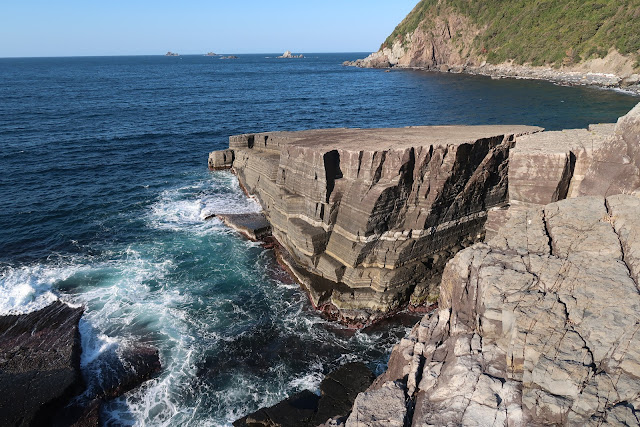
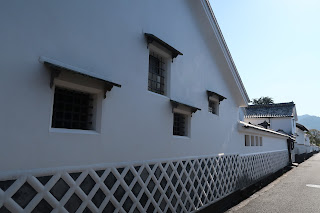
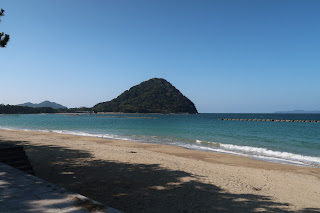

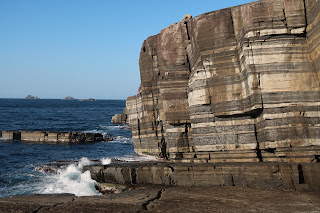


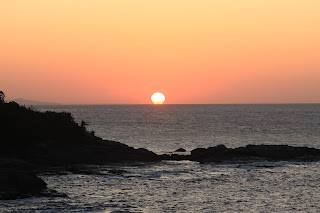












No comments:
Post a Comment